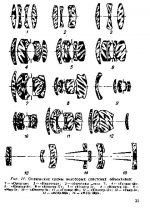R
ruben
Guest
I think that by now we can frankly say we know a lot about the standard Jupiter/Helios and perhaps Sonnars too.
Yet one of our great advatages in our system Soviet cameras is in the very existance of the other focal length lenses. What do we know about them ?
As far as I am concerned, I am a great ignorant here. I would like to know if in the 35-85-135 lenses we find the same variation of optical quality. I would like to know how the best samples perform against their competitors. I would like to know about their competitors too, like those not so expensive Nikkors with Contax mount, fitting our Kievs. But if you know things concerning Leica mount Soviet lenses, kindly post.
I would like to know also about specific optical or technical common problems, beyond stiffness. Do we find here problems of alignment towards film plane ?
And, of course, we all would be inspired by great optical quality images made with them.
Hopefully along time this can become a great reference thread.
Cheers,
Ruben
Yet one of our great advatages in our system Soviet cameras is in the very existance of the other focal length lenses. What do we know about them ?
As far as I am concerned, I am a great ignorant here. I would like to know if in the 35-85-135 lenses we find the same variation of optical quality. I would like to know how the best samples perform against their competitors. I would like to know about their competitors too, like those not so expensive Nikkors with Contax mount, fitting our Kievs. But if you know things concerning Leica mount Soviet lenses, kindly post.
I would like to know also about specific optical or technical common problems, beyond stiffness. Do we find here problems of alignment towards film plane ?
And, of course, we all would be inspired by great optical quality images made with them.
Hopefully along time this can become a great reference thread.
Cheers,
Ruben
Last edited by a moderator:




